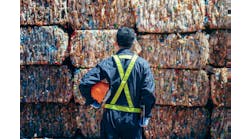Some of the students in my physical chemistry class at Michigan State erupted in spontaneous cheers, set balloons free and popped a champagne cork. It was our last chemistry class — ever! Professor Dye and the visiting professor from England weren't amused. I was embarrassed for my classmates. That's when I realized that I would miss chemistry and Jim Dye.
Chemical engineering is an uneasy amalgam of industrial chemistry and mechanical engineering. In the United States, it had its rudimentary beginnings with a course taught at the Massachusetts Institute of Technology by Lewis N. Norton in 1888. Since then, our profession has expanded away from its roots. Today, I think most chemical engineers are more comfortable with mechanical engineering than chemistry. So, let's consider some of the chemistry that you might want to re-remember.
Here's one of my favorites: the Brønsted–Lowry theory of acids. Strictly speaking, it states that a compound is an acid if it can donate a proton (H+) and a base if it can accept a proton. Sounds like cash flow from senior economics, doesn't it? In simple terms, Brønsted–Lowry means that to every other compound or material, a compound is either an acid or a base. When I worked at Anheuser-Busch, I was fascinated by the large craters etched into our otherwise impervious concrete pads. Acid produced by bacteria-eating molasses that had spilled during tank filling created them. That was Brønsted at work! Concrete has a pH of about 12. A typical organic acid produced by bacteria is probably in the 5–6 range. To concrete, even pH-7 rain is an acid.
Now and then, Le Chatelier's principle — a stress imposed on a chemical system at equilibrium will shift the equilibrium to relieve the stress — has bitten a few forgetful engineers in the hindquarters. At Millennium Inorganic Chemicals, we inherited a 1,500°C gas-phase reactor designed by DuPont; flue gas, oxygen and titanium tetrachloride, caged in nitrogen, are heated in the middle of the plug-flow reactor. Jamming so much nitrogen on the reactant side of an equation, with only oxygen present, caused mischief: nitric acid ate our lined tank at the other end of the process. So, we switched from nitrogen to argon during startup.
Our gas-phase reactors proved another interesting chemical principle: gas-phase reactions always are the purest, except possibly for gas/solid reactions with selective catalysts.
Biocatalytic processes can pose special complications. Jim Dye briefly touched upon this in his kinetics class: In 1778, Carl Wilhelm Scheele introduced Schweinfurter (Prussian) green. This copper arsenate dye became popular in wallpaper — even more so when it was discovered that the dye killed bedbugs! In places with a cool, damp climate (like much of Europe), mold can grow on the wallpaper. The mold consumes the starch used in the paste to put up the wallpaper. It also takes up arsenic from the dye, which through a complex series of biochemical reactions is turned into trimethylarsine oxide and then reduced to poisonous trimethylarsine, which is excreted as a gas. People living in rooms with the wallpaper grew sick and even died. Prussia banned the dye in 1838, England and France much later. It was not until 1945 that a chemist identified trimethylarsine as the culprit.
Water solubility often gets chemical engineers in trouble. Members of upper Group 1 in the periodic table, e.g., Na–K, are nearly always soluble. Away from Group 1, carbonates, phosphates, sulfates, and hydroxides generally are insoluble. In the transition elements, with the exception of Pb and Ag, chlorides, nitrates and acetates are soluble.
Then, there's the eruption that results when you drop a Mentos candy into a carbonated beverage. Some chemists argue it stems from bubbles forming on the surface of the Mentos, but I think they're all wet. I've seen the same effect with a root beer float and by adding saccharine to hot tea: it's surface tension. When two soluble components are added together, surface tension decreases (per the Gibbs isotherm equation). The opposite result occurs when two insoluble or semi-soluble components are mixed together. Because Mentos are soluble in the pop, the surface tension drops and a geyser erupts. TV's MythBusters concluded that the pitting of the Mentos candy creates abundant sites for nucleation. They forgot that you still have to get the carbon dioxide to form. The extensive surface area is a factor, just like the saccharine in my tea. This may seem far afield from our business but it isn't. Improper use of a surface-tension-decreasing foam was to blame for a fatality at Millennium.



